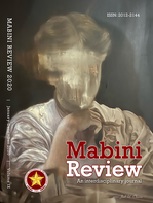Comparative Study on the Ethnic Stereotypesand Self-Stereotypes of the Kapampangan,Ilocano, and Tagalog Students of TarlacState University
DOI:
https://doi.org/10.70922/sxmk2w71Keywords:
Ethnic Stereotypes, Ethnic Self-Stereotypes, Ilocanos, Kapampangans, Philippine Ethnolinguistic Groups Tagalogs, Tarlac City, Tarlac State UniversityAbstract
Tarlac State University (TSU) is a multi-ethnic and multicultural institution with a student population that is predominated by the Kapampangan, Ilocano, and Tagalog ethnolinguistic groups. This paper is a comparative study of the ethnic stereotypes and self-stereotypes of these three ethnolinguistic groups. Using a modified Katz and Braly trait checklist, this paper was able to: 1)profile the ethnic stereotypes and self-stereotypes of these three ethnolinguistic groups, 2) determine their uniformity indices, 3) determine their positivity/negativity indices, 4) compare and contrast their profiled ethnic stereotypes and self-stereotypes, 5) compare and contrast the uniformity indices of their ethnic stereotypes and self-stereotypes, and 6) compare and contrast the positivity/negativity indices of their ethnic stereotypes and self-stereotypes. This paper was also able to establish that the Kapampangan ethnic stereotype and self-stereotype shared the most number of traits in common, while the Tagalog ethnic stereotype and self-stereotype shared the least number of traits in common. This paper was also able to establish that the uniformity indices of the Kapampangan ethnic stereotype and self-stereotype are closest to each other; while those of the Tagalog ethnic stereotype and self-stereotype are farthest from each other. Finally, this paper was able to establish that the positivity/negativity indices of the Kapampangan and Tagalog ethnic stereotype and self-stereotype are both closest to each other; while those of the Ilocano ethnic stereotype and self-stereotype are farthest to each other. This paper is significant not only in knowing whether there is a difference between how the three ethnolinguistic groups construct each other’s stereotypes and their respective self-stereotypes, but more so in laying down the preliminary information that would lead towards understanding the dynamics among these same ethnolinguistic groups, and towards building a more cohesive student body in TSU, or citizens of Tarlac City, or inhabitants of Tarlac Province. This paper is also important in providing a model study that can be replicated in other multicultural institutions and locations in the country.
Downloads
Downloads
Published
Issue
Section
License
Copyright (c) 2022 Dr. Jeanette P. Mendoza, Mary Irene Clare O. Deleña, Dr. F.P.A Demeterio III (Author)

This work is licensed under a Creative Commons Attribution-NonCommercial 4.0 International License.
Articles published in the MABINI REVIEW will be Open-Access articles distributed under the terms and conditions of the Creative Commons Attribution-Noncommercial 4.0 International (CC BY-NC 4.0). This allows for immediate free access to the work and permits any user to read, download, copy, distribute, print, search, or link to the full texts of articles, crawl them for indexing, pass them as data to software, or use them for any other lawful purpose.


